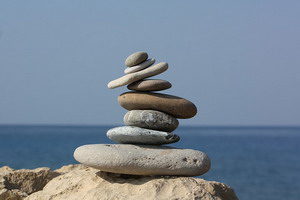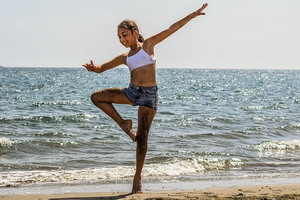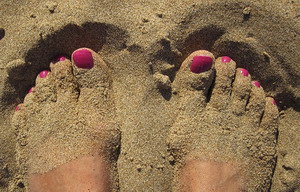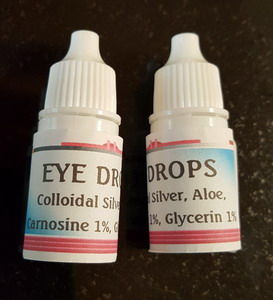| Welcome |
|
October 7, 2018
Balance coordination
Hi ,

An issue that has been coming up for a lot of patients lately is how to keep their adjustments in place. They will come in to see me for some complaint, I put things back together, and they are fine for several days to a couple weeks. Then for seemingly little reason their back, or their foot, or their hip, or whatever will go “out of place” and they will have to come back in for another
adjustment. What is this all about? Why don’t things stay put where they belong?
There are a number of answers to this trouble including the ever popular ‘stress’, low blood sugar episodes, work ergonomics, and even poor sleep and energy levels. But the most popular problem I am running into right now is balance issues. I am not
talking about vertigo where the room feels like it is spinning around. What I am talking about is much subtler, so subtle most of you are not even aware it is happening – or not happening.

Every time you contract any body muscle, a whole bunch of other muscles react to that contraction by either letting go or also contracting. This elaborate orchestration is handled by a part of your nervous system called your proprioceptive system. This system provides constant feedback to your brain’s balance system. It measures how tight or loose every muscle in your body is at each moment and how gravity is pulling on your joints. It does this with little stress and strain measuring receptors all over the body, particularly in the muscle bellies and ligament attachments.

When you walk to the fridge to grab a sparkling water, as your hand reaches forward your neck and upper back muscles have to tighten up to counter the downward and forward pull of the weight of your arm. Those muscles have to instantly adjust to the added weight of the water when you lift up on the bottle. Your low back, hip, and leg muscles have to supply extra tightness to provide a solid foundation so you don’t tip forward. Literally you engage your whole body just to grab a drink.
Just contracting a muscle, most any muscle, simultaneously requires you to relax the opposing muscle at exactly the right speed to match the contraction of the first muscle. If this smooth simultaneous action dose not happen correctly, the joint that both muscles are attached to will get pulled and jammed. Considering all the different actions involving the huge number of muscles that come into play with even the simplest of activities, it is a wonder that all our joints are not being jammed all the time. Jammed joints produce pain and inflammation – the feeling that something is ‘out’.

So what I am saying here is that it is the smooth and effective action of the proprioceptive nervous system that is the single most important player in keeping your body joints feeling fine. If your balance nerves are not working well, then your body can not ‘hold’ and adjustment. Your body will constantly be complaining about sore joints and muscles. It does not require you to lift something too heavy or chop two cords of firewood or lift that two year old into its car seat to pull your back out. Just reaching for that bottle of sparkling water is all it might take for you to suddenly have a pain in the back. It is all about the balance coordination system. How well is it working?

Try a simple test. I do this with patients all the time. Close your eyes and see how long you can stand on one foot. Do this close to something you can grab a hold of in case you start to fall. A healthy response is to balance 15
seconds with your eyes closed. If you can not do better than two seconds, then you are classified as a serious fall risk. Testing eyes closed is a way to test the proprioceptive balance system in your knees and feet. With your eyes open you are using a visual balance system, which is way too slow to catch you if your foot slips and you start to loose your balance. So how did you
do?

Patients that do not have good balance coordination in their knees and feet are not going to be able to maintain a stable pelvis and hip structure. This in turn produces chronic low back instabilities. This moves up the spine to produce instabilities in the mid-back, neck, and even into the jaws and head. Everything is connected and everything affects everything else. I generally focus on building stability in the feet, knees, hips, pelvis, and low back, but with some patients the trouble is poor muscle coordination in the shoulders producing chronic rotator cuff issues and stiff joints. This can travel up to the neck and down to the elbow and hand. This balance coordination stuff is important everywhere.
So what can we do to improve our balance coordination system?
Step number one is to practice balancing on one foot with your eyes closed every day. You will be surprised at how fast your system will improve. Find a doorway or counter you can put your hands on/around to catch yourself as you start to lose your balance and just go to work. Practice for a couple minutes a couple times per
day. This system needs constant work. These nerves are of a type that the body will break down if you are not using it for a week or two. They are like muscles where just two weeks of inactivity (like bed rest) will cause a 50% loss of muscle tone. These nerves are like that.

Step two is to advance to standing on an unstable surface like an Airex pad, a rocker, or a wobble board. Start by balancing with your eyes closed with both feet on the unstable surface and then after you’ve mastered that, then try balancing on just one foot with
your eyes closed. I also recommend working your low back and hip balancers by sitting on a big therapy ball for half an hour a day and bouncing around. If you want to get fancy, you can do a number of balance exercises like the Superman position on the ball.

For foot stabilizer action, the best thing is walking barefoot in the sand. I know this is usually not available, so just walking around barefoot as much as possible is good - plus wearing ‘barefoot walking’ shoes is a good choice.

Joining a good Yoga class or Tai Chi class is an excellent way of building balance. If you really want to show off, you can do your Yoga while you are balancing on your paddle board on the lake. Yes, they actually have a Yoga paddle board class locally.
Move it or lose it is the absolute rule in the body. You cannot spend your day in front of a computer or on the couch and expect your joints to be healthy and work well. You have to move them. More than that you have to challenge them with balance activities. Walking in a swimming pool might be good for lubricating the
joints, but it does not challenge the balance system or improve strength for when you are on land.

Building balance has to be approached slowly and carefully. Obviously anything involving balance carries the risk of loosing your balance. For instance, with my sweetie Ellen we do balance exercises on one leg every morning because her stroke specifically destroyed the balance center in her brain. To do her balance, we stand
her beside the bed so that if she falls it will be onto the bed. She will balance on the ‘bad’ leg while swinging her good leg around. She will hold on to my hand with her stroked hand to engage the balance nerves in that arm as well. No matter what your condition, most of you can engage in balance activities to build better balance coordination and therefore better joint stability.

The media has been pounding the importance of exercise for years now. Yes, exercise is important, but balance is just as important if not more so. Exercise equipment at a gym is designed specifically to eliminate balance to reduce injury. Financially gyms do not promote balance activities, although we are now
seeing at least some gym balls and balance boards starting to show up. Free weights are much better for building balance than the weight stacks and specialized equipment. So getup, close your eyes, and balance!
Take care,
David
New Hours:
Mon - Fri 10 to 3:30
We will be working straight thru lunch to accommodate as many patients as possible. Thank you.
Ellen update:
 That thundershower we had last week told us fall is here, so that means it was time for our yearly trip up to Apple Hill. The weekend is not a good choice if you don't like traffic. But after about an hour of stop and go on the back roads, we made it to Boa Vista orchard. We were able to try a bunch of different apple types and indulge in some local treats.
That thundershower we had last week told us fall is here, so that means it was time for our yearly trip up to Apple Hill. The weekend is not a good choice if you don't like traffic. But after about an hour of stop and go on the back roads, we made it to Boa Vista orchard. We were able to try a bunch of different apple types and indulge in some local treats.
|
| |
| |
| |
LDL 'bad' cholesterol not a cause of heart disease 
A new review of the research by an international team of physicians and researchers concludes that the belief over the last 50 years that LDL cholesterol is bad and causes heart disease is based on flawed deceptive research which ignored contradictory results, misleading statistics, and the exclusion of clinical trials and data that shows opposite results. Likewise the data and argument for using statin drugs is similarly flawed.
LDL
_____________________________________________
"Failure is simply the opportunity to begin again, this time more intelligently."
~ Henry Ford
__________________________________
Longer daily fasting increases lifespan
In this mouse study researchers found that by reducing the number of feeding times per day but keeping the total amount of food the same increased the lifespan of the mice. The longest living mice were those that ate all their food in one meal per day. That produced the greatest amount of fasting time and the longest lifespan.
Fasting
________________________
"Life is a series of experiences, each one of which makes us bigger, even though sometimes it is hard to realize this. For the world was built to develop character, and we must learn that the setbacks and grieves which we endure help us in our marching onward."
~ Henry Ford
_________________________________________________
Our brain wants to be lazy
Based on brain mapping studies of young adults, it appears that our brains are naturally attracted to sedentary activities and avoid active times. The excuse the researchers used for this was that evolution favors those who are able to conserve resources and energy.
Lazy
_________________________________________
"If there is any one secret of success, it lies in the ability to get the other person's point of view and see things from that person's angle as well as from your own."
~ Henry Ford
_____________________________
Our address is 9725 Fair Oaks Blvd. suite A
Our hours are M - F 9 to 1 and M, Tu, & Th 3 to 6
Finding the new location is very easy. Coming from highway 50 up Sunrise Blvd, you turn left and go up a block. We are on the right hand side - the building just past the Subway Sandwich shop. If you are coming down Sunrise from the Mall area then just turn right on Fair Oaks Blvd and up a block on the right.
If you are coming from the Roseville area you could come down Sunrise Blvd, but that is a long trek. It is probably shorter time wise to come down Auburn Blvd - San Juan Ave like you have been for the Sunset office, but instead of turning left at Sunset, keep going straight 3 more lights to Fair Oaks Blvd and turn left. Go down 2 lights to New York Ave, go through the intersection, and immediately turn into the turn lane once the center
divider ends. We are on the left.
You are free to reprint this article in your newsletter as long as you include the following statement in the same size type and color:
"This article appears courtesy of Fair Oaks Health News, offering natural and healthy solutions for body, mind and soul. For a complimentary subscription,
visit http://www.fairoakshealth.com"
Referral doctor for when we are out of town: Jennifer Webb DC
Jennifer Webb DC
6216 Main St. suite C1
Orangevale
988-3441
|
| |
|
|
|
_______________
to check on old newsletters
_______________
About Dr. DeLapp
|
Dr. DeLapp has been a philosopher, non-force Chiropractor, medical intuitive, and health innovator for over 35 years. He began experimenting with medical intuition in 1972 while studying physics at UC Davis. In addition to physics he designed and completed an individual major in the philosophy and psychology of education. Shortly after he choose to pursue a career in the only
truly health oriented profession available at that time, Chiropractic. He graduated with honors in 1981 with his doctorate and opened a private practice.
Since that time he has continued his research into the effects of consciousness and learning on health.
He developed the Biomagnetic Retraining system for correcting movement abnormalities.
Since 1991 he has focused on developing a powerful system for uncovering and assisting the mind-body connection in health and personal growth. The in-depth coaching, guided by the subconscious direction from the body, is called Heartflow and the simpler mind-body retraining for health and unfoldment he has named Gracework. Both are available at Fair Oaks Health.
Fair Oaks Healing
& Arts Center
Staff
 Dr David DeLapp DC
Dr David DeLapp DC
Chiropractor
Ellen Flowers FGM
Spiritual Life CoachEnergetic Nutritionist
Health Care Coordinator
Susan Richardson
Office Manager
Front Desk
Sherry Herrera
Front Desk Person
Susan McDonald
Catherine Cummings
New Products
Purity Oil Spray
Pain Relief
Essentials
CBDs plus 9 essential oils

Ear Drops

Eye Drops

Super Concentrated
Fish oil

Gut Healer

Sinus Rinse
Powder

Balanced Salt
|
|

